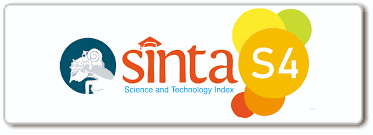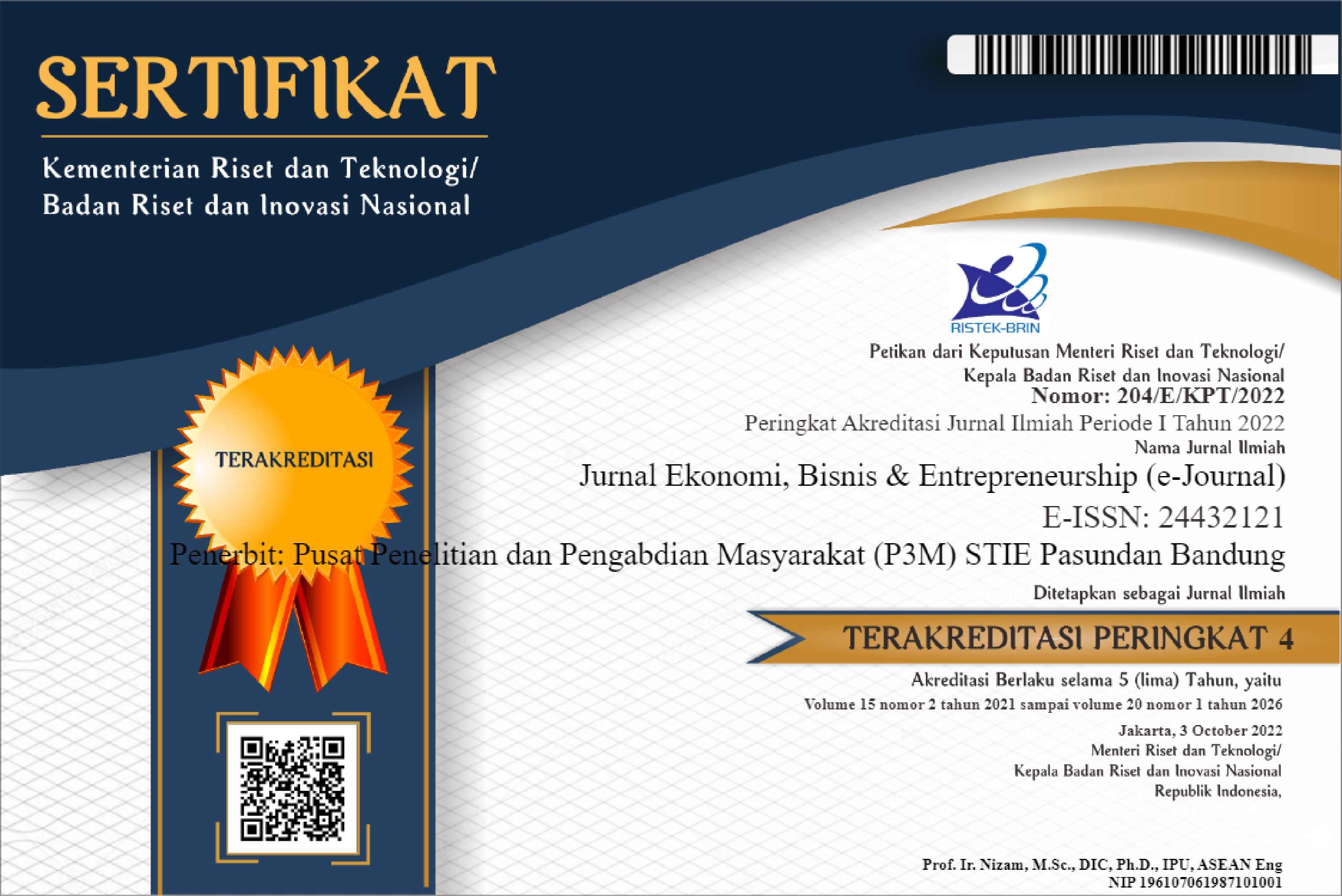Analysis of The Effect of Financial Inclusion and Literature Intensity On Financial Technology
Study On Students in Malang City
DOI:
https://doi.org/10.55208/jebe.v16i2.264Kata Kunci:
Financial Literacy, Financial Inclusion, Financial Technology, Sharia bankingAbstrak
Pada era modern saat ini teknologi bukanlah hal yang asing bagi masyarakat Indonesia. Hampir seluruh masyarakat Indonesia menggunakan teknologi informasi khususnya pada layanan internet. Fintech ialah salah satu metode pelayanan jasa dibidang keuangan yang populer di era digital. Sektor ini menjadi faktor yang sangat diharapkan oleh pemerintah dan masyarakat dalam peningkatan akses terhadap layanan keuangan. Penelitian ini menggunakan analisis stucture equation model partial least square (SEM-PLS) dengan alat bantu berupa software SmartPls serta didukung dengan data dari kuesioner yang dibagikan kepada para mahasiswa pengguna layanan fintech yang berada di Kota Malang. Hasil yang di dapatkan dari penelitian ini diketahui bahwa literasi keuangan berpengaruh positif dan signifkan terhadap financial technology pada Mahasiswa Kota Malang. Hal ini ditunjukkan dengan adanya nilai original sample sebesar 0,028 dan nilai t statistik 13,613. Nilai t statistk lebih besar dari nilai t tabel yakni 1,96. Kemudian dari penelitian ini juga diketahui bahwa inklusi keuangan berpengaruh positif dan tidak signifikan terhadap financial technology pada Mahasiswa Kota Malang. Hal ini ditunjukkan dengan adanya nilai original sample sebesar 0,832 dan nilai t statistik 0,454, selain itu diketahui juga bahwa nilai t statistik lebih kecil dari nilai t tabel yakni 1,96.
Unduhan
##submission.downloads##
Diterbitkan
Cara Mengutip
Terbitan
Bagian
Lisensi
Hak Cipta (c) 2022 Eko Suprayitno, Dhiya Azami Abdullah

Artikel ini berlisensiCreative Commons Attribution-NonCommercial-ShareAlike 4.0 International License.








